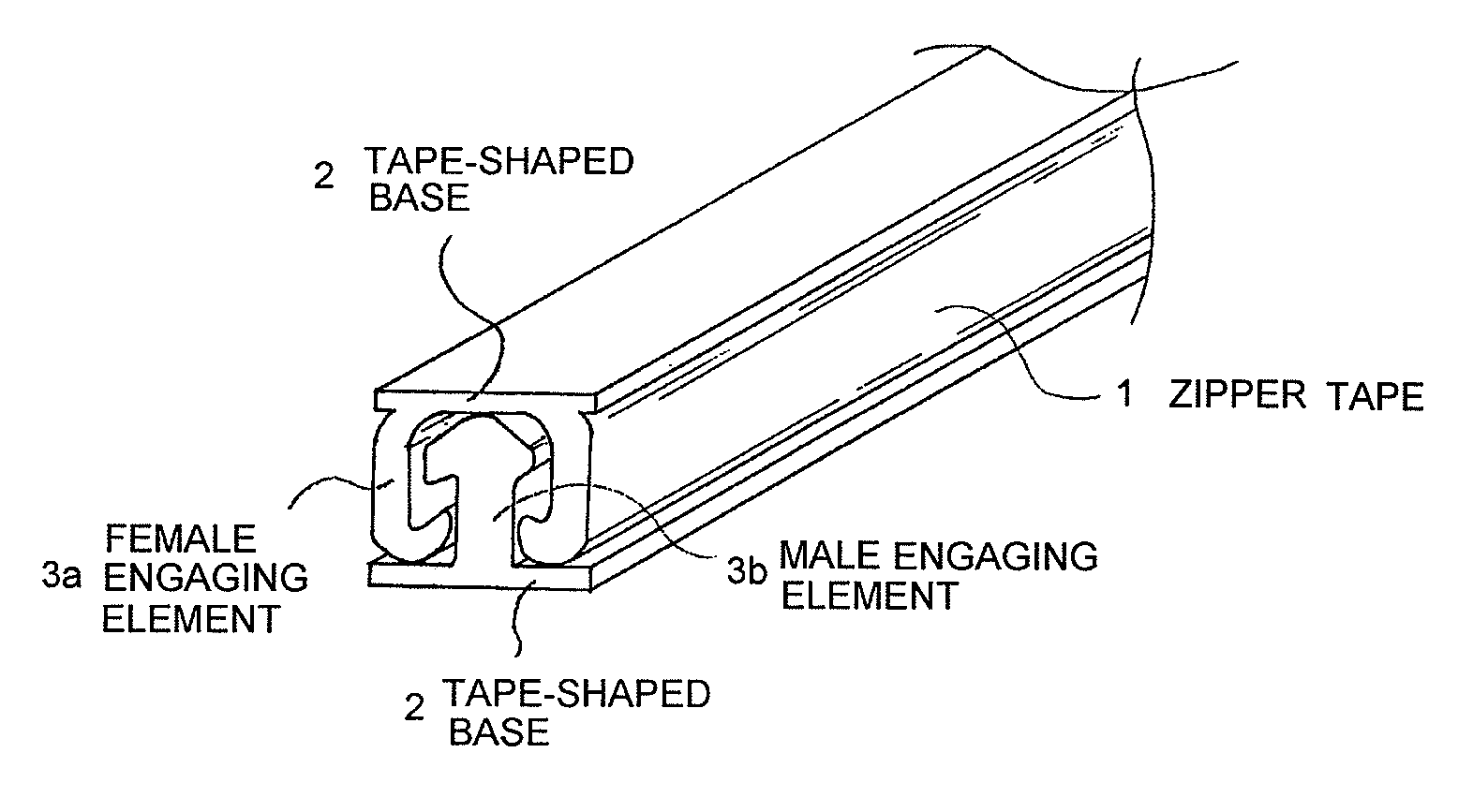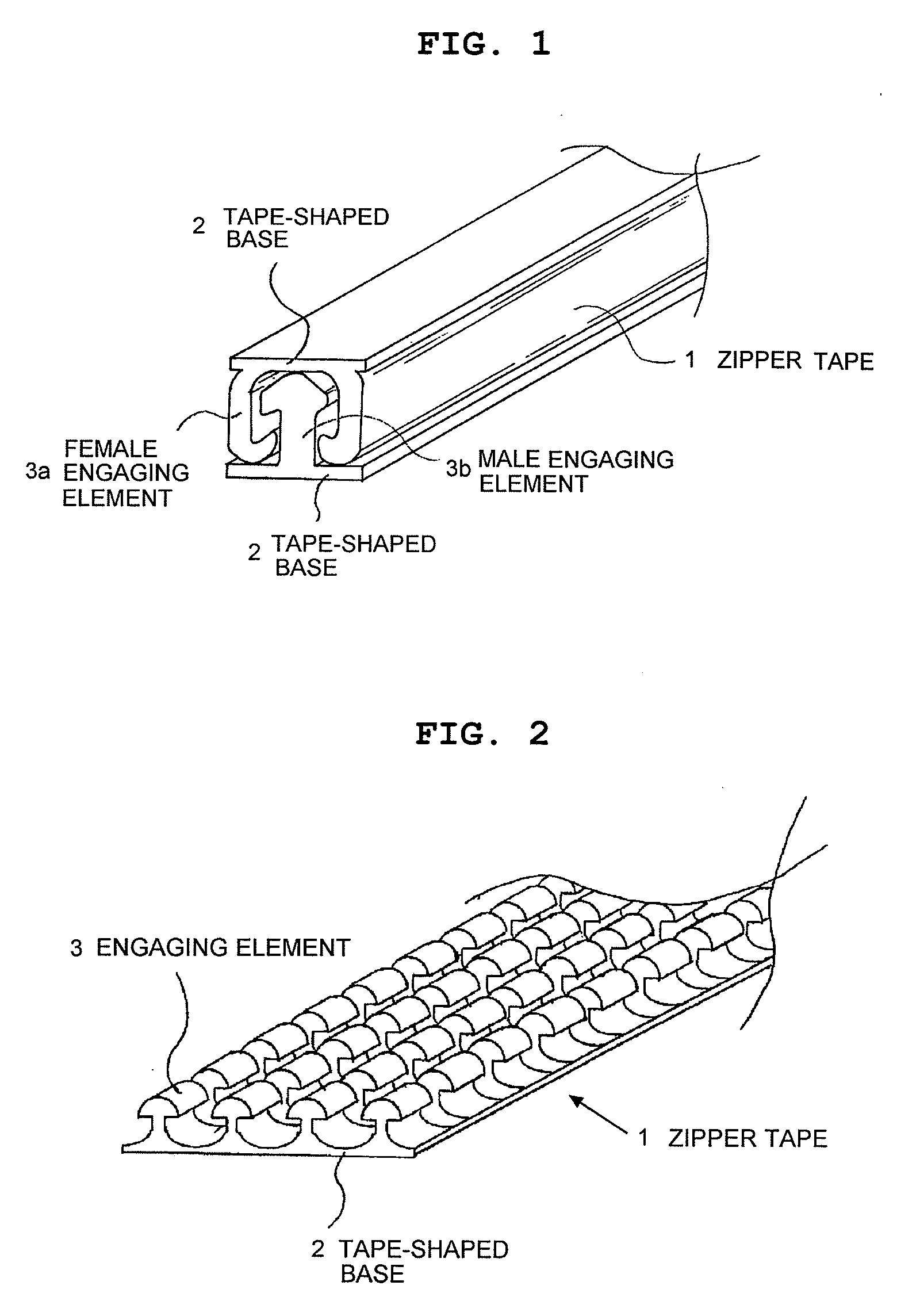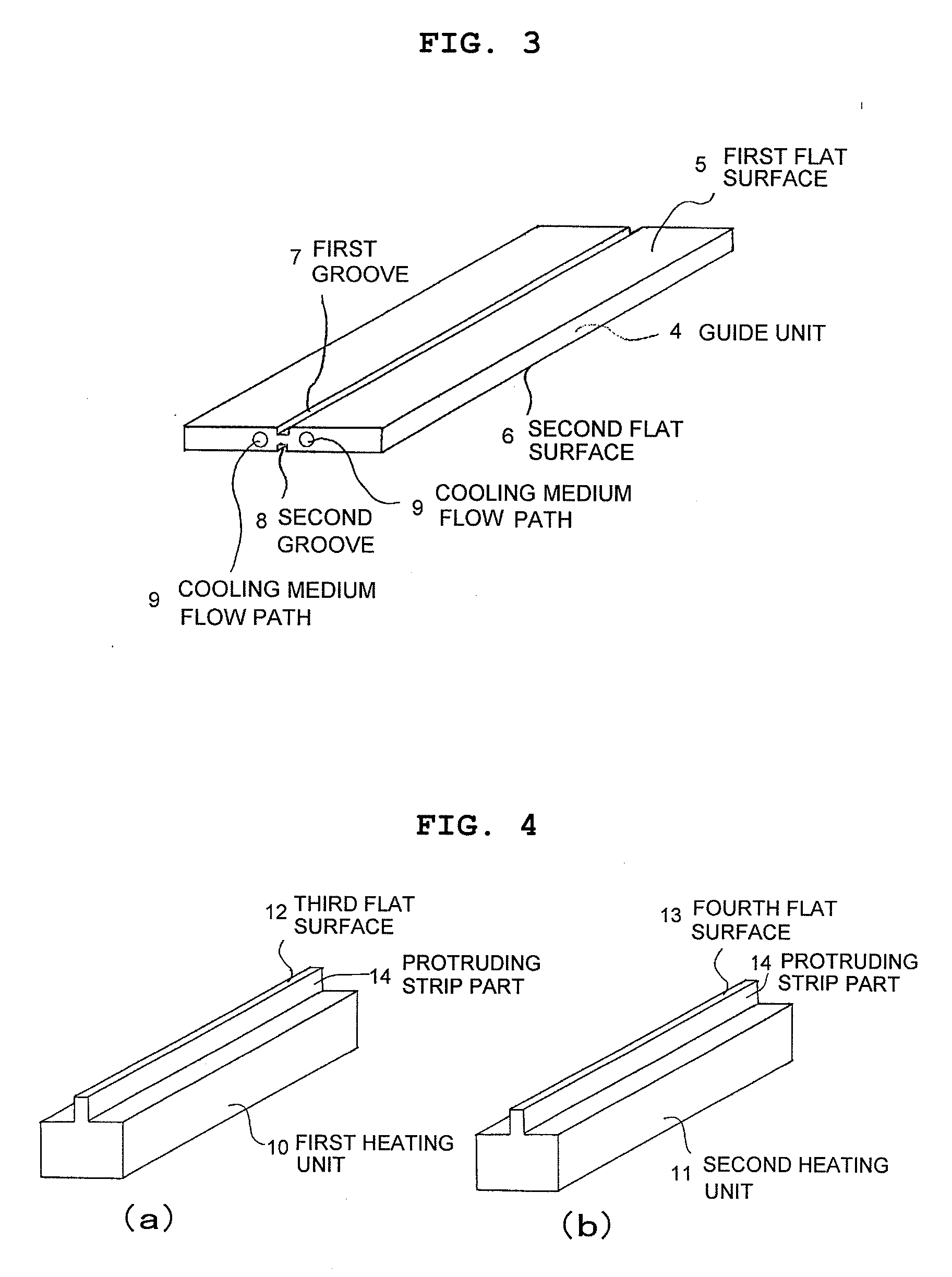Heat bonding method and heat bonding device
a heat bonding and zipper technology, applied in the field of heat bonding methods and heat bonding devices, can solve the problems that the methods described in patent documents 1 to 3 cannot be applied to this kind of circumstance, zipper tapes cannot be effectively heat-bonded to the film without generating wrinkles, and wrinkles on the main body film, etc., to achieve easy heat-bonding to each other, no wrinkles, and easy engagement with each other
- Summary
- Abstract
- Description
- Claims
- Application Information
AI Technical Summary
Benefits of technology
Problems solved by technology
Method used
Image
Examples
embodiment 1
[0074]The present embodiment describes how the zipper tape shown in FIG. 1 is heat-bonded to the film.
[0075]FIG. 6 is a diagram showing the details of the heat bonding part H of the heat bonding device shown in FIG. 5, FIG. 6 showing an end view of a surface that is perpendicular to a direction in which the zipper tape shown in FIG. 1 and the film flow and also an end view of a state in which the heating units are separated.
[0076]FIG. 7 is an end view showing a state in which the heating units shown in FIG. 6 are in pressure-contact with the guide unit.
[0077]A plate-shaped rectangular guide unit made of aluminum or other metal is used as a guide unit as shown in FIG. 3.
[0078]A first flat surface 5 of this plate-shaped guide unit 4 is provided with a first groove 7 that extends linearly in a longitudinal direction of the guide unit 4. This first groove 7 is slightly wider than the width of the female engaging element 3a, as deep as the height of the element part of the female engagin...
embodiment 2
[0100]FIG. 2 is a diagram showing an example of the zipper tape used in the present embodiment.
[0101]In this zipper tape, a plurality of unit engaging elements are provided discontinuously in the longitudinal direction of the tape-shaped base and the discontinuously formed engaging elements are arranged in a plurality of parallel rows. This zipper tape can be engaged with another zipper tape by engaging a liner of engaging elements between opposing engaging elements, as viewed cross-sectionally in a width direction of the zipper tapes. In other words, rows of engaging elements of one zipper tape are shifted in the width direction so as to be positioned between rows of engaging elements of another zipper tape, and these engaging elements of the both zipper tapes are pressed against each other to push the engaging elements of the former zipper tape into the engaging elements of the latter zipper tape.
[0102]FIG. 8 shows an example in which the present embodiment is applied to the heat ...
example 1
[0110]An example of Embodiment 2 is described next. In the zipper tape shown in FIG. 2, the width of four rows of engaging elements was set at 5.2 mm, the height of the zipper tape at 1.2 mm, and the thickness and width of the tape-shaped base at 0.1 mm and 5.5 mm respectively. The material of the zipper tape was polypropylene.
[0111]The thickness of the guide unit was 5 mm. The width and depth of each of the first and second grooves were 5.4 mm and 1.2 mm, respectively. Water that was kept at 15° C. was used as the cooling medium.
[0112]The film was obtained by laminating together a biaxially-oriented polyethylene terephthalate film having a thickness of 12 mm and a cast polypropylene film having a thickness of 60 μm. The heat-bondable surface is a cast polypropylene film having a thickness of 60 μm.
[0113]The first and second heating units were kept at 160° C., and the widths of the third and fourth flat surfaces were set at 6 mm so as to cover approximately half of each of the first...
PUM
| Property | Measurement | Unit |
|---|---|---|
| Temperature | aaaaa | aaaaa |
| Width | aaaaa | aaaaa |
| Content | aaaaa | aaaaa |
Abstract
Description
Claims
Application Information
 Login to View More
Login to View More - R&D
- Intellectual Property
- Life Sciences
- Materials
- Tech Scout
- Unparalleled Data Quality
- Higher Quality Content
- 60% Fewer Hallucinations
Browse by: Latest US Patents, China's latest patents, Technical Efficacy Thesaurus, Application Domain, Technology Topic, Popular Technical Reports.
© 2025 PatSnap. All rights reserved.Legal|Privacy policy|Modern Slavery Act Transparency Statement|Sitemap|About US| Contact US: help@patsnap.com



